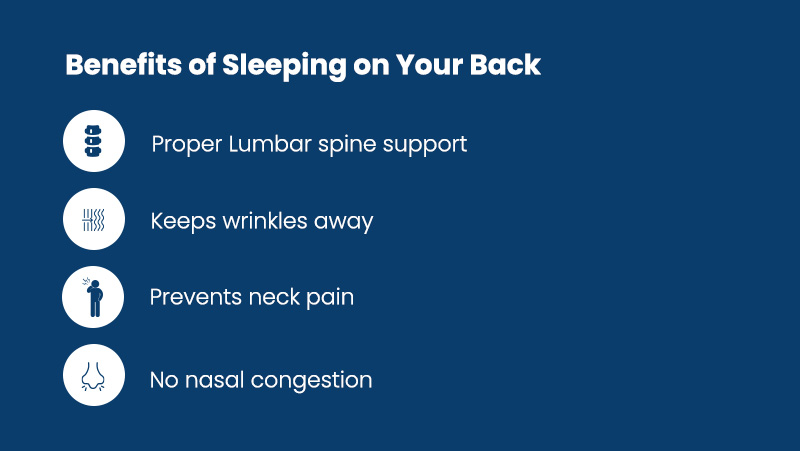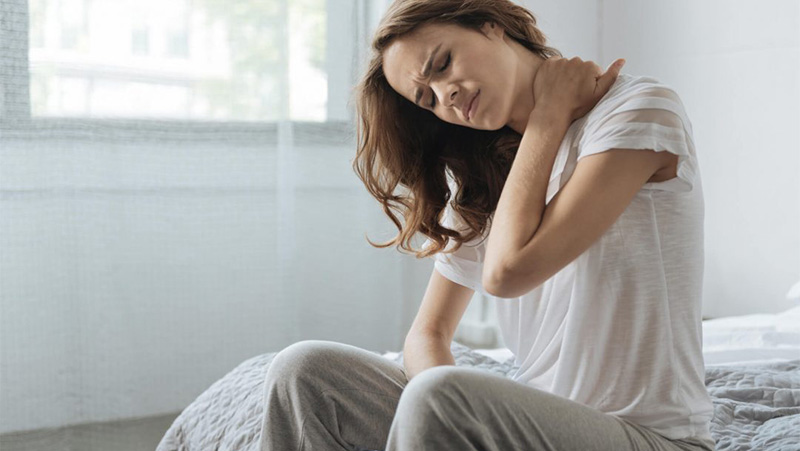Sleeping makes for a large chunk in your life. Even though you sleep for like 8 to 9 hours its still the longest time you spend with yourself in calm. Sleeping is much more than this actually. Your sleep positions can say quite a lot about the quality of your sleep and in some ways your health. So if you prefer a position that is giving you troubles you might want to switch it up a little!
Many sleep positions can either help or harm your health. People prone to frequent body pain or suffer through some medical conditions might have to try some adjustments in their sleep positions to prevent such issues while sleeping. It is obviously not easy to give up your favourite sleeping posture and adapt a new one over night. You might have to practise it for some time and try a few things to speed the process up.
Want better sleep? Try a new sleep position that fits your needs. It could help! But remember, it's not the only answer. If you do not wish to change your posture than you can just make some mods in your current preferred sleeping positions, only in case its not working for you the way you want.
What Are Some of the Best Sleeping Positions?
Let us learn more about these sleeping postures and whether or not they are good for us:
The sleep position best for you aligns your spine from hips to head. It's dependent on your health and comfort. Still, some positions are better. Mainly, side or back sleep is healthier than stomach sleep. In these positions, your spine is more easily balanced and supported, easing pressure and letting your muscles chill out and recuperate.
Changing your sleep positions can work wonders if you're struggling with back pain or other health conditions. It could be beneficial to experiment with sleeping differently for improved rest. During a research study, adults suffering from back pain were taught to sleep either on their back or side to find relief. Remarkably, they observed significant pain reduction in just a month.
Getting used to a new sleeping position can take a while. But if you find comfort in sleeping on your stomach, don’t feel pressured to change it. Investing in the correct mattress and pillow can reduce your chance of experiencing pain and maximize spinal alignment.
Side Sleeping
Over 60% of individuals prefer to sleep on their side, with men tending to do so longer each night than women. As kids, we tend to equally distribute our sleep across various positions. However, by the time we reach adulthood, an evident preference for side sleeping develops. As we grow older, our spines become less flexible, which could explain why older adults find it more comfortable to sleep on their side.

Sleeping on your side can truly do wonders for your health. It encourages a better alignment for your spine and is the least likely sleep position to cause back pain, especially when you prop yourself with pillows. Plus, side sleeping may also help alleviate heartburn and snoring. This makes it a particularly good choice for:
- Older People
- Pregnant Women
- People suffering from acid reflux
- People who snore or have sleep apnea
- People prone to back pain
Best Sleeping Position for Pregnant Women
Experts suggest that pregnant women should consider sleeping on their side with their knees slightly bent. This position, particularly on the left side, makes for more comfortable rest as it takes the stress off a growing belly. It allows your heart to pump blood more efficiently throughout your body. The left side is touted as being best because it eases any pressure on your liver and helps ensure a healthy blood supply to the unborn baby, uterus, kidneys, and your heart.
If sleeping on your left side while pregnant is causing some discomfort, feel free to switch things up and rest on your right side occasionally. This helps by taking some pressure off your left hip. To further ease the tension, try positioning pillows beneath your belly, between your legs, and against the small of your back.
Best Sleeping Position for People With Back Pain
The top sleep pose is side-lying with padding positioned between your knees. This can ease discomfort for those with neck or back aches. Pick a pillow having a thickness matching the gap between your neck and shoulder. In a side sleep position with a plump pillow, your neck aligns with your spine. This wards off body pain while keeping a proper posture during sleep.
Is Side Sleeping Bad?
People suffering from shoulder aches or concerned about skin lines should avoid side sleeping. To keep shoulder discomfort or stiffness at bay, change sleeping postures now and then. Use the right kind of pillow and mattress when you sleep on your side.
Make sure your mattress lets your hips and shoulders sink deeper than your middle spine. Side sleeping might lead to facial wrinkles. Your face rubs the pillow, stretching and squeezing your skin.
Which Side is Better?
Already a side sleeper and aiming for better? Choose to sleep on your left, not your right. The right side can stress your inner organs. This is why experts suggest the left side for pregnant women and those with acid reflux or GERD. Sleeping on the right might make heartburn worse.
Sleeping unsymmetrical can cause morning discomfort. So, use pillows for a better side sleeping position. They should line up your spine from hips to head. Keep pillows on both sides to stay put and a small one between the knees to balance the hips.
Back Sleeping
Back sleeping is the second-favorite sleep position. It rivals the benefits of side sleeping. Lying flat on your back keeps your spine aligned. It equally spreads body weight, avoiding potential neck or back pains. Sleeping on your back will also help you get rid of nasal congestions or other related allergic outcomes as long as you are maintaining your body in an upright position.

Sleeping on your back also help to improve your the texture of your skin. During sleeping on your back keeps your face upwards preventing all sorts of pressing of your skin through pillow or mattress that keeps wrinkles away.
Back sleeping helps you in many ways:
- Proper Lumbar spine support
- Keeps wrinkles away
- Prevents neck pain
- No nasal congestion
Best Sleeping Position for Neck Pain
For easing neck pain, the top sleep posture is on your back. This stance stops the incorrect alignment that happens when you snooze on your side or tummy. To dodge neck discomfort, opt for a pillow that props up your neck but still allows your head to nestle in. Cushions that snugly cradle your head, like those made from memory foam or those with a special groove for your head, are ace choices. Or, you could twist a towel under your neck and nab a flatter pillow for your head.
In the instance of sleeping on your back, strive to have your arms in matching spots. For instance, both arms resting by your sides is better than one perched on your forehead. The latter can wreak unevenness in your back and trigger shoulder or neck pain.

Stomach Sleeping
Most folks don't prefer to sleep on their stomach. Studies show we slumber less than 10% of the time in this pose. Yet, stomach sleeping is not all bad. In fact, it can help lessen snoring by freeing up your breathing path. Although, breathing in this position might require more effort because your ribs need to fight gravity, causing you to exert more energy and leading to less refreshed sleep.
Despite some pluses, stomach sleeping is not advised for everyone. Certain individuals should steer clear of stomach sleeping such as:
- People with neck and nack pain
- Expectant mothers
- People with wrinkle prone skin
Stomach sleeping offers the least back support among sleep positions and boosts the pressure on your spine. This can lead to awakening with discomfort or pain.
How to Sleep Properly as a Stomach Sleeper?
Put a slim pillow under your hips to help level your spine and ease tension. A hard mattress can also help avert the spinal problems associated with sleeping on your stomach.
Your ideal sleep position is the one that allows you to have a good night's sleep without interruptions. If you wake up in the morning feeling refreshed and without any discomfort, your sleep position is likely just fine. Don't feel compelled to alter it. But, if you feel that a different position might improve your sleep quality, give it a shot. Switching positions requires patience. Use the mentioned tips to assist you in adjusting to the new position.
Sources:
Sleep Foundation: Best Sleeping Positions





















